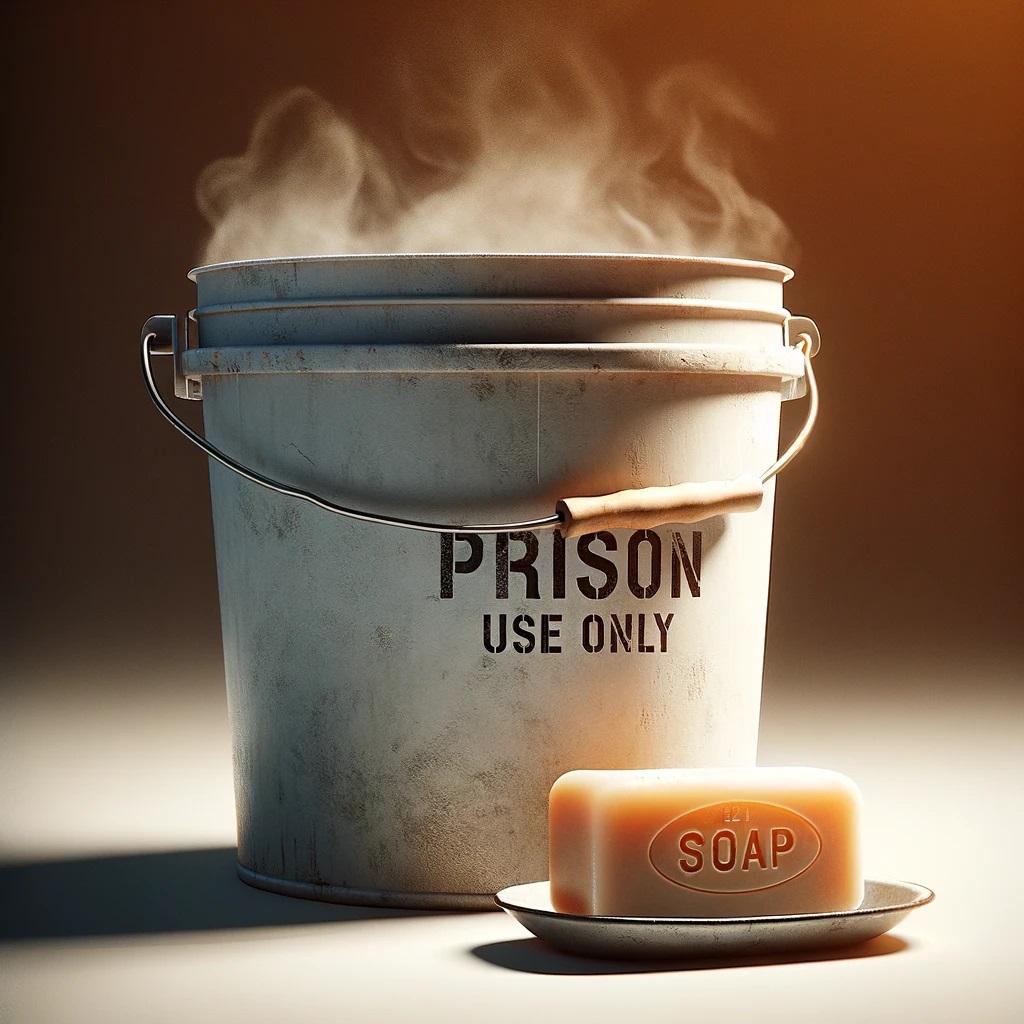Revolutionizing Prison Hygiene: The Transformative Power of Hypochlorous Acid

The Current State of Prison Hygiene
Cleaning Practices in Prisons
In prisons, safety concerns necessitate strict limitations on cleaning agents. Potent disinfectants such as bleach are restricted due to their potential weaponization. Consequently, most facilities rely on warm soapy water for daily cleaning—a method that, while safer, is substantially less effective against resilient pathogens.
Consequences of Ineffective Cleaning
Inadequate cleaning practices can have serious repercussions in prison environments. Facilities often face outbreaks of diseases like influenza, tuberculosis, and MRSA. These outbreaks not only pose health risks but also lead to increased medical costs, the need for more healthcare staff, and considerable operational disruptions, burdening the correctional system financially.
Hypochlorous Acid as a Solution
Introduction to Hypochlorous Acid (HOCl)
HOCl stands out as a potent disinfectant, offering a safer and more efficacious alternative to traditional cleaning methods. Its ability to effectively combat a wide range of pathogens, including viruses, bacteria, and fungi, positions it as an ideal cleaning solution in prisons.
Safety and Efficacy of HOCl
HOCl’s low-toxicity and eco-friendly nature is particularly beneficial in the context of prisons. It eliminates the risk of being used as a weapon, addressing a major security concern. HOCl is proven to be more effective in neutralizing harmful pathogens than conventional cleaning methods, enhancing its suitability as a superior cleaning agent for prison settings.
Implementing HOCl in Prisons
On-Site Generation vs. Shipping Fluids
A key advantage of HOCl is the practicality of on-site generation, which reduces the challenges and expenses associated with transporting heavy disinfectant liquids. On-site generators ensure a steady, cost-effective supply of HOCl, aligning with the unique logistical needs of correctional facilities. The PCT Annihilyzer® System is particularly effective in this role, efficiently generating, dispensing, and managing OSG 460D and OSG 11-12C solutions, which are potent yet more eco-friendly alternatives to traditional cleaning agents.
Health and Safety Benefits
The implementation of HOCl in prisons significantly impacts health and safety. Its effectiveness in curbing the spread of infections contributes to better health outcomes for both inmates and staff. Additionally, its non-hazardous nature guarantees a safer cleaning process, vital in densely populated prison environments. The use of products like Hydrolyte®, produced from weak salt water, further enhances this safety profile, being effective against a variety of pathogens without the risks associated with harsher chemicals.
Cost-Benefit Analysis
Financial Implications
Adopting HOCl in prisons promises considerable financial benefits. By diminishing the frequency and severity of disease outbreaks, HOCl can substantially reduce healthcare-related costs. Moreover, generating HOCl on-site offers enduring economic advantages by minimizing dependence on external disinfectant supplies.
Overcoming Challenges
Security and Operational Considerations
Implementing HOCl in prison environments necessitates meticulous planning. Proper training and education for staff and inmates on the appropriate use of HOCl are crucial to ensure its effectiveness and safety.
Policy and Regulatory Aspects
Introducing HOCl as a new disinfectant in prisons requires navigating through policy and regulatory changes. Collaborative efforts with health and safety authorities are essential to ensure compliance with relevant standards and positive contribution to prison hygiene management.
The Future of Prison Hygiene
Broader Implications
The successful adoption of HOCl in prisons could set new hygiene standards for other institutions such as schools, hospitals, and public facilities. Its effective use in prisons could encourage its widespread application, potentially enhancing public health standards in various sectors.
Innovations in Infection Control
The potential of HOCl extends beyond current uses. As eco-friendly disinfectants become increasingly important, HOCl could lead in developing more advanced, sustainable solutions for infection control, benefiting not just prisons but the broader community.
Conclusion
The integration of Hypochlorous Acid (HOCl) into the US prison system marks a significant step forward in addressing the complex challenge of maintaining hygiene and controlling infections. Its effectiveness as a disinfectant, combined with its safety and cost-effectiveness, particularly when generated on-site, makes HOCl an ideal solution for prison environments. The shift towards HOCl not only promises substantial financial savings but also ensures a healthier, safer environment for inmates and staff. As the prison system continues to navigate the intricacies of infection control, HOCl stands out as a progressive, efficient, and sustainable solution, paving the way towards more effective and humane management of prison hygiene.
5 Comments
Leave A Comment Cancel reply
Recent Posts
- A Comprehensive Comparison: Hydrolyte™ Hypochlorous Acid vs. Bleach for Disinfection, Health, and Safety January 22, 2024
- Revolutionizing Prison Hygiene: The Transformative Power of Hypochlorous Acid January 12, 2024
- Sanitizing Your Grow Room November 16, 2023
- Fighting Hop Latent Viroid In Cannabis Operations August 8, 2023
- Understanding Terms: Sterilization vs Disinfection vs Sanitizing vs Cleaning July 13, 2023
STAY IN THE LOOP
Subscribe to our free newsletter.
[fusion_form form_post_id="4569" margin_bottom="0" hide_on_mobile="small-visibility,medium-visibility,large-visibility" /]

Great awesome issues here. I?¦m very happy to peer your post. Thank you a lot and i am looking ahead to contact you. Will you kindly drop me a e-mail?
Perfect execution!
Perfect execution!
You made some good points there. I looked on the internet for the subject and found most persons will go along with with your blog.
Merely wanna remark that you have a very nice website , I enjoy the pattern it really stands out.